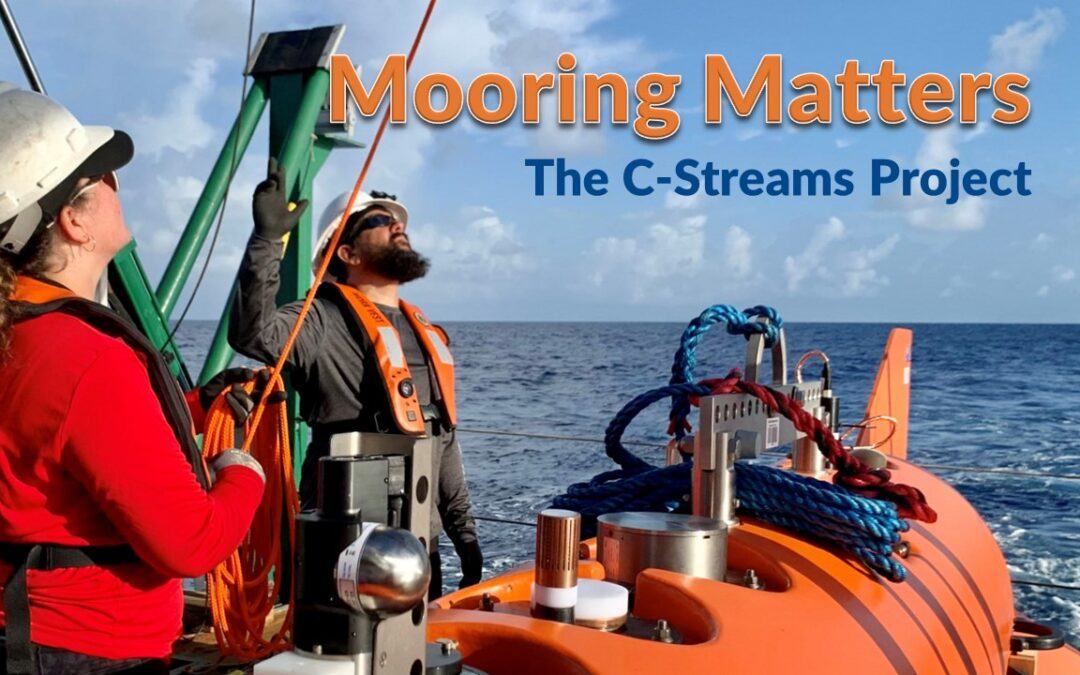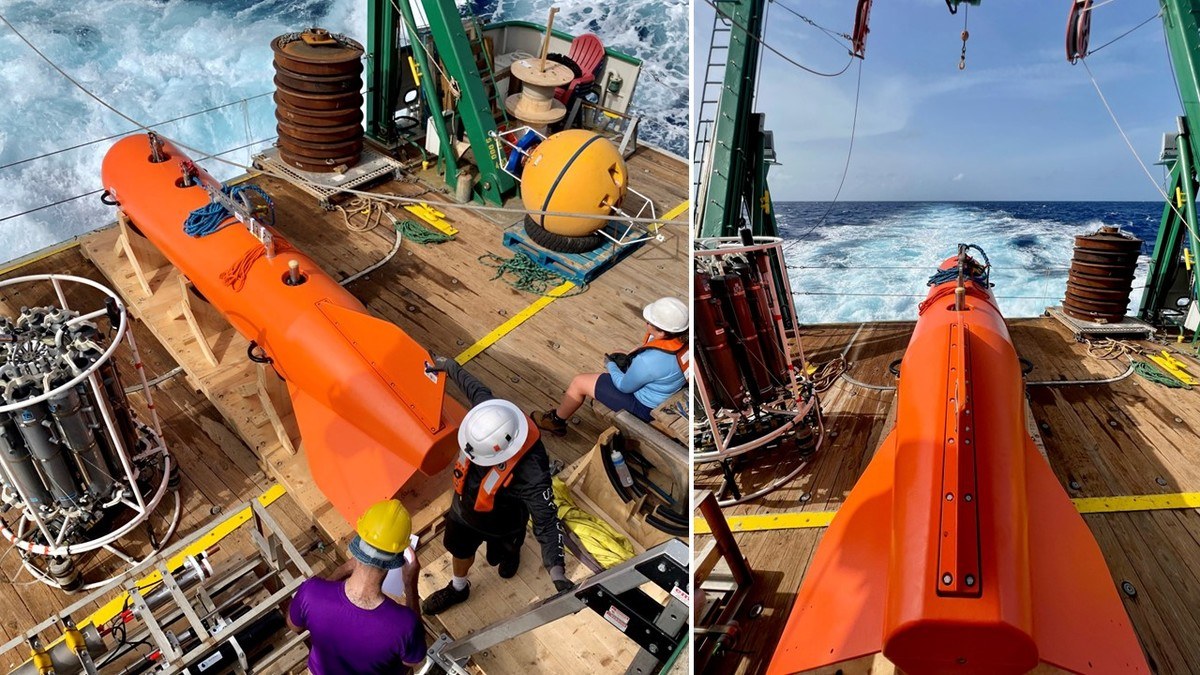
This month’s technical highlight discusses the C-Streams Project – Studying How the Gulf Stream Affects the Climate System.
The C-Streams Project is a collaborative research project by The University of Liverpool, the University of Miami, the National Oceanography Center, the Scottish Association for Marine Science, and the British Antarctic Survey.
The project deployed a variety of scientific instrumentation into the Gulf Stream on a customized DeepWater Buoyancy StableMoor® Mooring Buoy. The C-Streams Project team will use these instruments to monitor the flow of carbon and nutrients in the Gulf Stream. Project scientists hope the results will provide insight into the Gulf Stream’s role in the ocean carbon cycle and how it affects global climate change.
The C-Streams Project
The C-Streams Project is a four-year, £4 million collaborative research project supported by the Natural Environment Research Council (NERC) and the US National Science Foundation (NSF).
Headed by Professor Ric Williams of The University of Liverpool, the C-Streams Project will observe how the current speed, turbulence, and other factors can affect carbon and nutrient circulation in the Atlantic Ocean.
Most ocean carbon exchange occurs through two mechanisms:
- Phytoplankton photosynthesis, which requires nutrient-dense water
- Chemical exchange between seawater and atmospheric carbon dioxide
By observing the flow of nutrients and carbon in the Gulf Stream under varying conditions, the C-Stream Project seeks a deeper understanding of these dynamic carbon exchange processes.
“We will use this data alongside the latest state-of-the-art ocean and climate models to provide us with some answers as to how the Gulf Stream affects the carbon cycle, a hitherto ignored aspect of the climate problem,” explains Professor Ric Williams.
The Deployment
Deploying sensitive instrumentation in the turbulent Gulf Stream involves significant coordination between scientists, mooring specialists, sailors, and engineers. Instruments require stability to ensure consistent readings, which means a mooring system capable of withstanding the Atlantic Ocean’s changeable and sometimes violent weather.
To launch the C-Streams Project, scientists successfully deployed two DeepWater Buoyancy StableMoor® Mooring Buoys holding a variety of scientific instrumentation into the Gulf Stream through the Florida Straits.
Thanks to the captain and crew of the Walton Smith, principal scientist Professor Lisa Beal (University of Miami), the mooring expertise of Eduardo Jardim (University of Miami), Dr. Pete Brown and Darren Rayner (National Oceanography Centre), and the project research team, the launch went smoothly.
The team also deployed three biogeochemical moorings designed by Darren Rayner. These additional moorings included buoys, sensors, and autonomous vehicles.
Over the next four years, the deployed equipment will obtain data, take measurements, and collect samples to assess how the Gulf Stream current affects nutrients and carbon transport. The C-Stream Project team will analyze this information to determine whether the Gulf Current’s interactions enhance or inhibit the ocean’s carbon dioxide uptake.
The Buoy
It takes a special buoy to provide a stable platform for instrumentation in high-speed ocean currents like the Gulf Stream. Specifically engineered for these types of applications, DeepWater Buoyancy’s StableMoor® buoys provide excellent mooring stability in extreme flow environments.
With a tapered cylindrical design, the StableMoor® reduces drag and minimizes mooring inclination and excursions. The decreased frontal area provides superior dynamic stability in high current areas compared to traditional spherical buoys. A high-strength GRP tail and stainless-steel mooring swivel ensure optimal flexibility and stability in the Gulf Stream’s strong, changeable currents.
David Capotosto, DeepWater Buoyancy’s Director of Business Development, is excited to see how the project evolves. “It is always amazing to see how ocean scientists and engineers utilize our products,” he says. “This project showcases our team’s ability to deliver on our design philosophy: to provide our end users with a product that is fit to their application.”



